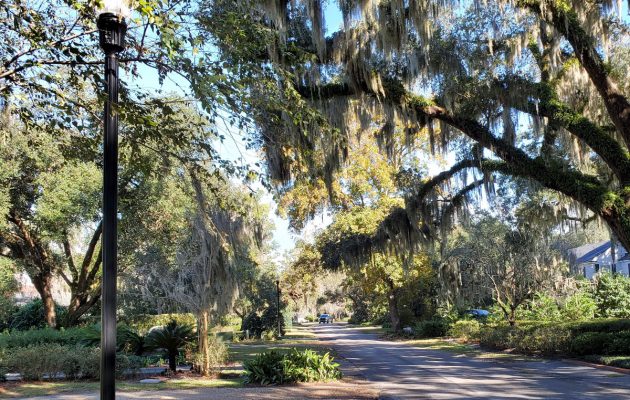JEA completes ‘poles to holes’ utility lines conversion in Ortega Point North community
Posted on January 7, 2022 By Editor Top Stories

JEA, AT&T and Comcast announced on Nov. 30 their completion of work to convert the existing overhead utility lines to underground in the Ortega Point North Overhead to Underground Utility Conversion Project. They requested that any outstanding issues be reported to JEA’s Project Outreach team by Dec. 15, 2021. Upon completion of any outstanding work, the project is formally closed out, and any project-related costs will be audited and submitted to Jacksonville City Council for final approval.
The conversion project is a community-driven “grass roots” project requested and organized by Ortega Point North neighborhood residents. A total of 75 percent of the property owners within the project area, which includes 122 parcels in Ortega Point and some blocks south of the Point, signed a petition in favor of paying a special assessment of $12,555 each to convert overhead electric, telephone and cable television lines to underground utilities. The majority of the work took place along McGirts Boulevard, Ortega Boulevard, Grand Avenue, Bettes Circle and Ionic Avenue.
The petition/ordinance for assessing 100 percent of the property owners in the neighborhood for the project’s costs was presented and approved by the Jacksonville City Council on June 25, 2019. The special assessment and financing costs for those property owners who financed their individual service lateral conversions will appear on property owners’ next property tax bill following City Council approval.
The project was not welcomed by all residents. For some property owners, the plan to move utility lines from the traditional pole to a hole in the ground is welcomed for cosmetic reasons, while others want it for safety reasons, citing downed power lines as dangerous. “Undergrounding” to prevent power lines from falling and uprooting trees during a hurricane has become a popular request within many communities.
However, others feel undergrounding utilities is costly to undertake as well as costly to repair. While access to underground systems can be hindered by floodwaters that often follow hurricane-force winds, after Irma there were more than 2,200 overhead line outages in Jacksonville but only 12 for underground lines. But neither overhead nor underground systems can protect power in every situation.
JEA began undergrounding new residential power lines nearly five decades ago, when city-county government consolidation mandated it for new development. Jacksonville has around 3,000 miles of overhead power lines. In 2017 Scenic Jacksonville proposed a plan to underground about 3 percent of the lines each year for the next 30 years, but currently the decision to convert – and to pay for it – is up to the desire of neighborhoods.
JEA’s overhead to underground conversion program focuses on undergrounding overhead electric, telephone, cable television, communication or other overhead distribution line facilities located within the public rights of way in a defined neighborhood boundary. The program also provides a means for neighborhoods to finance the conversion of overhead utility lines to underground systems through a special assessment process, enacted by City Council in 2007. Additionally, property owners have the option of financing the additional cost of connecting the undergrounded utilities from the right of way to their property’s structure.




 (2 votes, average: 3.00 out of 5)
(2 votes, average: 3.00 out of 5)




